Nagasaki: A Christian pilgrim destination
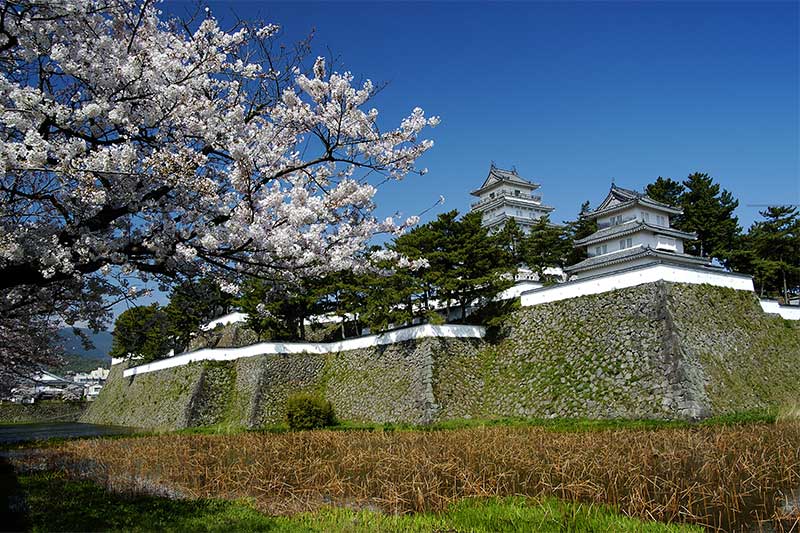
The Shimabara Castle was completed in 1624 after seven years of construction. Nagasaki Prefecture
NAGASAKI, Japan — Despite being a minority religion in Japan, Christianity has been present in the country for 450 years since the arrival of Francis Xavier in Nagasaki in 1549.
Nagasaki, a prefecture of Japan on the southern island of Kyushu, boasts of over 130 churches and related sites reflecting Japanese Christians’ strong faith amid going underground for 250 years due to religious persecution.
Present-day Nagasaki churches were built by former “hidden Christians” who came back to the Catholic Church when the Meiji Government accepted freedom of religion in Japan.
One of the churches dedicated to Christians who were persecuted in Japan is the Nakamachi Church in Nagasaki City. Located close to JR Nagasaki station, this church is dedicated to the 16 Martyrs of Nagasaki, including St. Lorenzo Ruiz, the first Filipino martyr and saint. In 1988, a monument dedicated to the 16 Martyrs was constructed in the garden of the church. Cardinal Jaime Sin of Manila attended the unveiling ceremony for the monument in recognition of St. Lorenzo Ruiz.

Nakamachi Church

Monuments dedicated to St. Lorenzo Ruiz and his companions have been built in a garden near the Nakamachi Church.
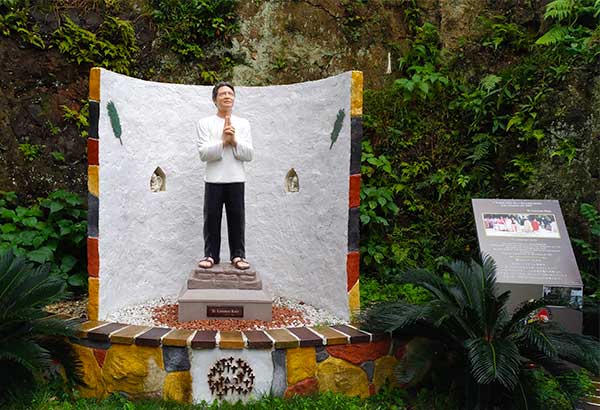
Jaime Cardinal Sin led the blessing ceremony for the statue of St. Lorenzo Ruiz in Nagasaki City in October 1992.
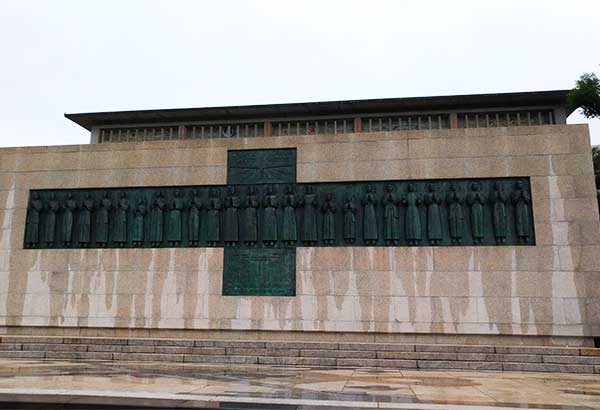
A monument dedicated to the 26 Martyrs of Japan was built in the site where they were persecuted and killed.
Near the Nakamachi Church is the 26 Martyrs site on Nishizaka Hill. This is the site where St. Paul Miki and his companions (the 26 Martyrs of Japan) were crucified on Feb. 5, 1597. This is also where St. Lorenzo Ruiz and his companions died on Sept. 29, 1637. After the atomic bomb devastated Nagasaki City in 1945, this site was made into a park to stand as “a symbol of endurance and the hope of the citizens of rising again after disaster.”
Another church rebuilt after the atomic bomb is the Urakami Cathedral, which is known as the Cathedral of the Nagasaki Archdiocese. Before the atomic bomb, the original church had two bell towers – one was crushed by the explosion while the other one was blown about 25 meters away. The remaining bell tower was preserved as a National Important Asset at the original site.

The original Urakami Church was devastated by the atomic bomb in 1945.
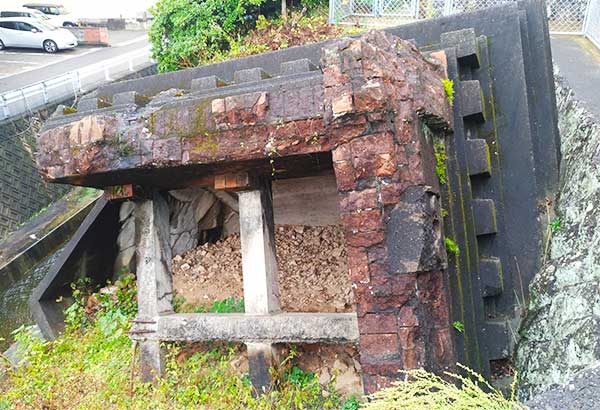
The remaining bell tower of the original Urakami Church was preserved in its original site.
Overlooking Nagasaki City is the Oura Cathedral, Japan’s oldest church and national treasure. At the front of the church stands a monument of the Virgin Mary, where she is believed to look over the city. In 1933, the church was designated as a national treasure only to be destroyed 12 years later by the atomic bomb. The designation of national treasure was reinstated when the church was restored. In 2016, the Vatican recognized the Oura Cathedral as a Minor Basilica.
Minamishimabara City in the Shimabara Peninsula, about 1 hour and 40 minutes by car from Nagasaki City, features tour sites applying for a World Heritage registration such as the ruins of Hara Castle, ruins of Hinoe Castle and Christian Tombstone.
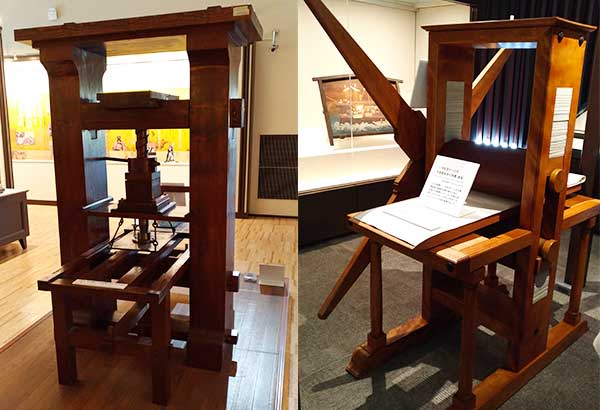
A replica of Gutenberg's letterpress printing machine is displayed at the Arima Christian Heritage Museum in Shimabara City.
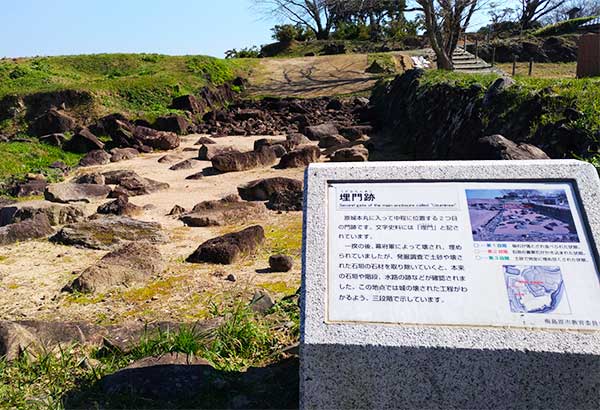
The ruins of Hara Castle is included in the tentative list for registration as World Heritage site.

Shimabara Castle

Unzen Hell
The Arima Christian Heritage Museum collection shows information about the flourishing Christian culture, Hinoe Castle and Hara Castle and the Shimabara Rebellion. The museum is open from 9 a.m. and 6 p.m. and entrance is free.
Tourists may also opt to explore the ruins of Hara Castle, a national cultural property, with a professional guide. The site was the main battlefield during the Shimabara/Amakusa Rebellion.
Another tourist destination in the peninsula is the Shimabara Castle Christian Museum, where historic materials on Christians, documents on local history and folklore are exhibited. The castle had been converted into a museum.
A Christian Martyrdom Monument also stands at Unzen Hell, one of the most famous tourist attractions in Unzen. The place is called “Unzen Hell” as it smells of sulfur due to the steam coming out of the ground. This is the place where Christians were persecuted, hence a stone memorial built in commemoration of them.
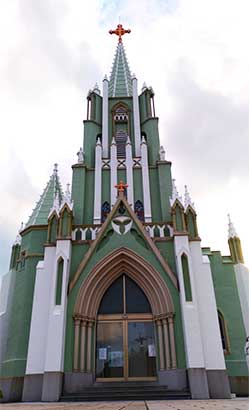
Hirado Xavier Memorial Church
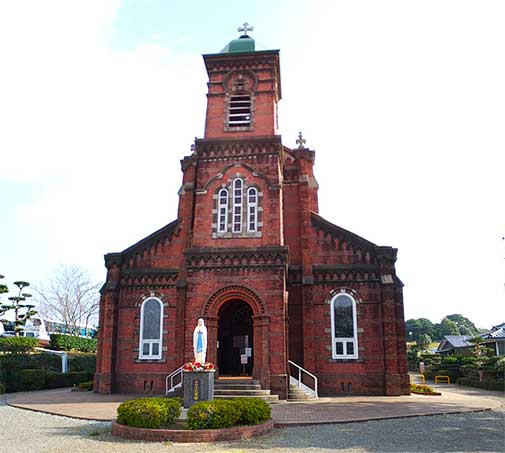
Tabira Cathedral
The Hirado Peninsula also offers destinations for Christian pilgrims such as the Tabira Catholic Church, a cultural property of Japan, and the Xavier Memorial Church. Francis Xavier traveled as far as Hirado to teach catechism and to baptize people when he introduced Christianity to Japan.
A strict religious ban in Hirado from the end of the 16th century resulted in the martyrdom of numerous Christians, forcing the remaining ones to go underground. The hidden Christians in Hirado passed down religious customs and traditions to their descendants until after the ban was lifted in 1873.



















